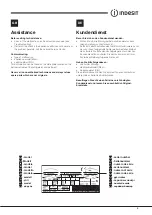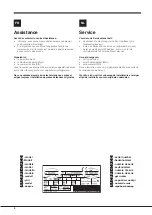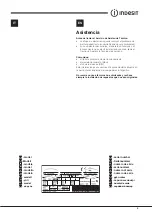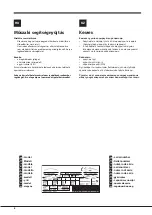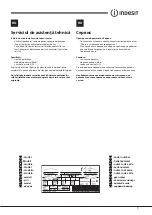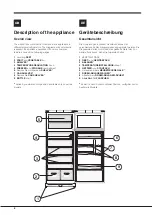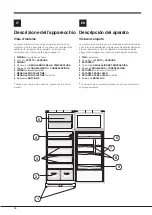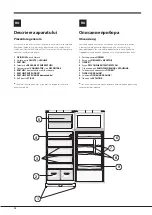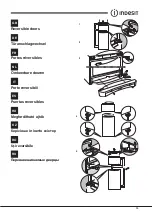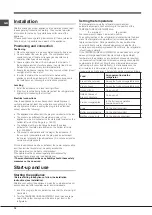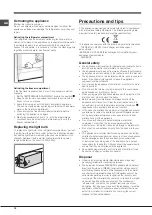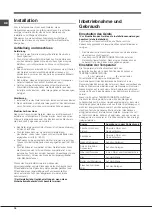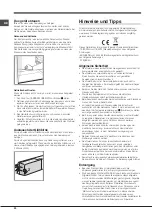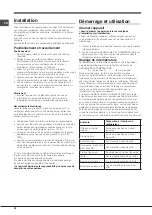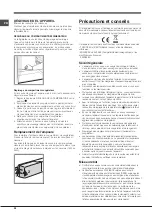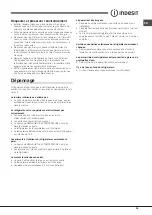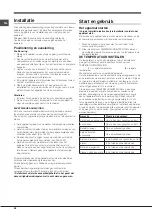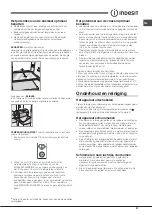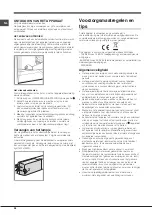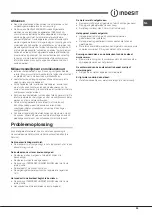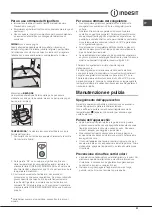
GB
17
Respecting and conserving the
environment
• Install the appliance in a fresh and well-ventilated room.
Ensure that it is protected from direct sunlight and do not
place it near heat sources.
• Try to avoid keeping the door open for long periods or
opening the door too frequently in order to conserve energy.
• Do not fill the appliance with too much food: cold air must
circulate freely for food to be preserved properly. If circulation
is impeded, the compressor will work continuously.
• Do not place hot food directly into the refrigerator. The internal
temperature will increase and force the compressor to work
harder and will consume more energy.
• Defrost the appliance if ice forms (see Maintenance). A thick
layer of ice makes cold transference to food products more
difficult and results in increased energy consumption.
• Regularly check the door seals and wipe clean to ensure they
are free of debris and to prevent cold air from escaping (see
Maintenance).
Troubleshooting
If the appliance does not work, before calling for Assistance (see
Assistance), check for a solution from the following list.
The internal light does not illuminate.
• The plug has not been inserted into the electrical socket, or
not far enough to make contact, or there is no power in the
house.
The refrigerator and the freezer do not cool well.
• The doors do not close properly or the seals are damaged.
• The doors are opened too frequently.
• The TEMPERATURE ADJUSTMENT knob is not in the correct
position.
• The refrigerator or the freezer have been over-filled.
• The atmospheric temperature of the area surrounding the
appliance is lower than 14°C.
The food inside the refrigerator is beginning to freeze.
• The TEMPERATURE ADJUSTMENT knob is not in the correct
position.
• The food is in contact with the back inside wall of the
refrigerator.
The motor runs continuously.
• The door is not closed properly or is continuously opened.
• The outside ambient temperature is very high.
• The thickness of the frost exceeds 2-3 mm (see Maintenance).
The appliance makes a lot of noise.
• The appliance has not been installed on a level surface (see
Installation).
• The appliance has been installed between cabinets that
vibrate and make noise.
• The internal refrigerant makes a slight noise even when the
compressor is off. This is not a defect, it is normal.
Some of the external parts of the refrigerator become hot.
• These raised temperatures are necessary in order to avoid the
formation of condensation on certain parts of the product.
The back wall of the refrigerator unit is covered in frost or
droplets of water.
• This shows the appliance is operating normally.
There is water at the bottom of the refrigerator.
• The water discharge hole is blocked (see Maintenance).
Summary of Contents for TA 5 FNF
Page 42: ...42 KZ 1 2 3 10 5 4 5 1 2 3 150 220 240 1 2 1 5...
Page 43: ...KZ 43 1 OK 2 OK 10 3 OK 10 24 18 C 24 4 9 14 14 C...
Page 44: ...44 KZ 5 1 2 3 4 5 2 15 25 1 2 73 23 EEC 19 02 73 89 336 EEC 03 05 89 2002 96 CE l...
Page 45: ...KZ 45 WEEE 2002 96 EC 14 C 2 3...
Page 50: ...50 RU 1 2 3 10 5 4 5 1 2 3 150 220 240 1 2 1 5...
Page 51: ...RU 51 1 OK 2 OK 10 3 OK 10 24 18 C 24 4 9 14 14 C...
Page 52: ...52 RU 5 1 2 3 4 5 2 15 25 1 2 73 23 EEC 19 02 73 89 336 EEC 03 05 89 2002 96 CE...
Page 53: ...RU 53 2002 96 EU WEEE 14 C 2 3...
Page 54: ...54...
Page 55: ...55...
Page 56: ...56 19515811700 08 2017...

